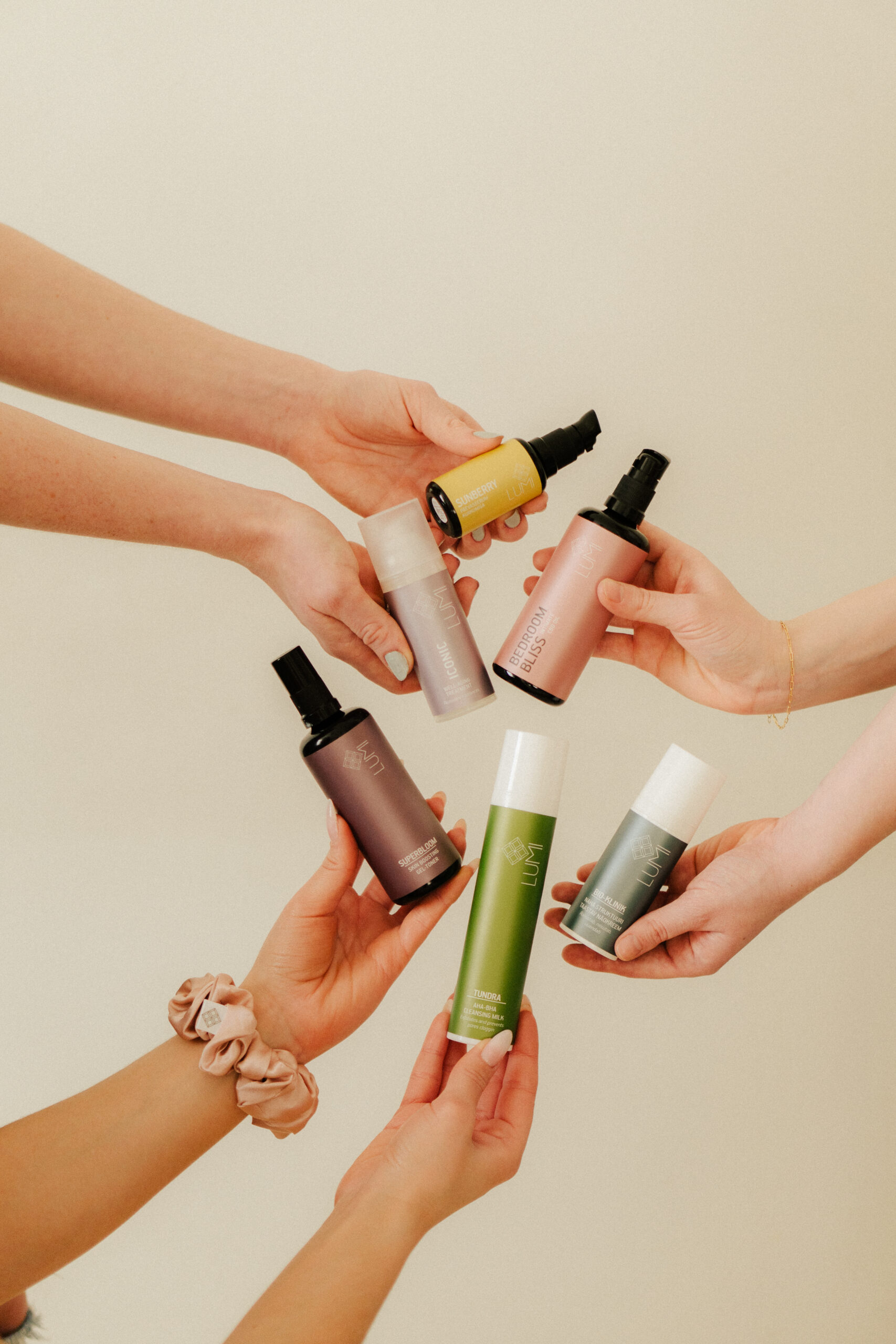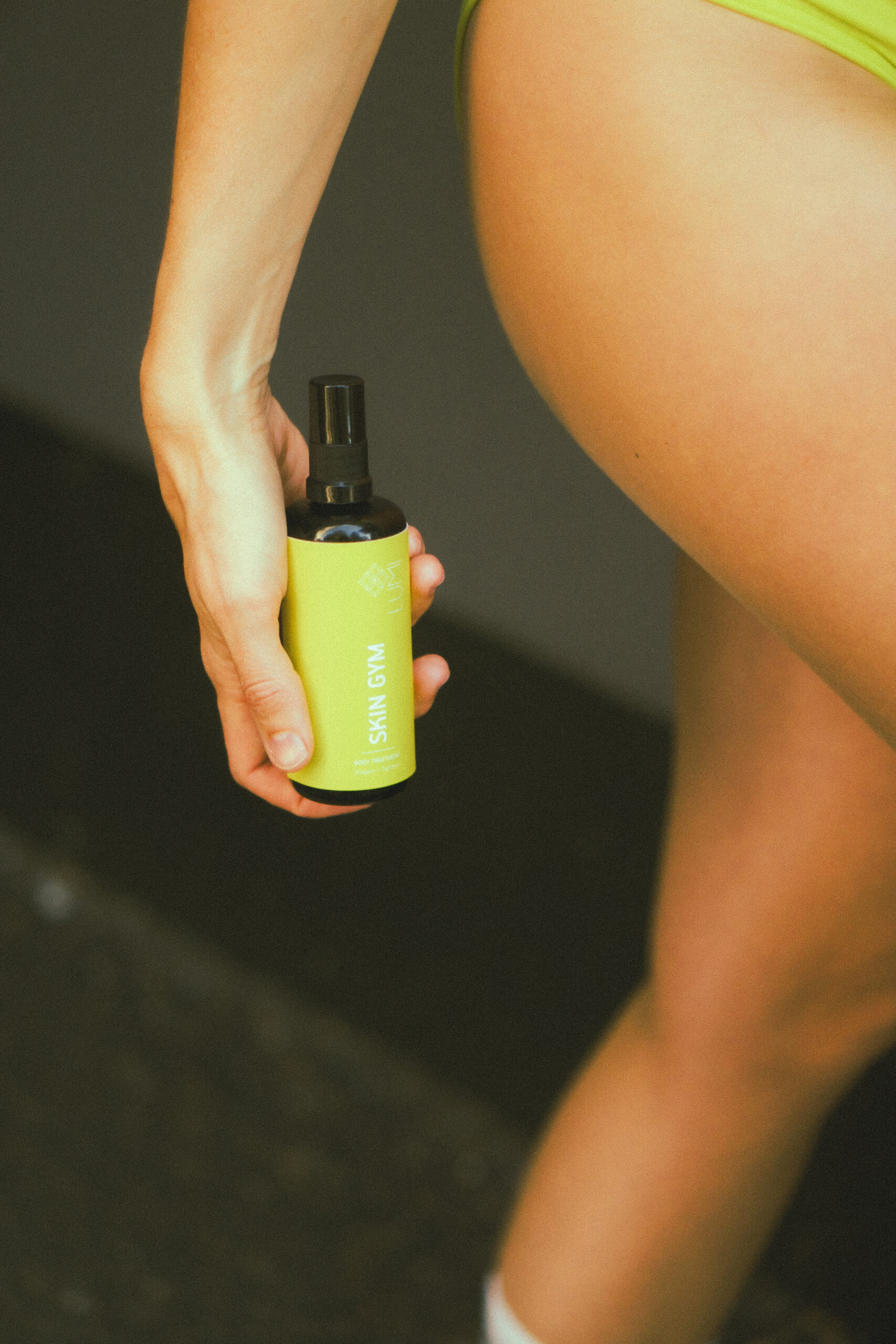ATOPIC DERMATITIS IN CHILDREN
Helen Hirv is one of the founders of Estonia’s premier natural cosmetics brand, LUMI. Helen came to skincare after her child was struggling with atopic dermatitis.
What to look for in skincare?
Helen: “Always keep in mind the principle of less is more. The product must be pure in its composition, and usually just one product is enough – either a bath oil or a base cream. The worst irritants and allergens are fragrances and preservatives. I have never washed a small baby with a body wash or liquid soap – most of these products only serve to dry the skin out and destroy the child’s skin’s protective layer. The moisturising oil or base cream must be properly absorbed into the skin – do not rush to clothe your child after application.
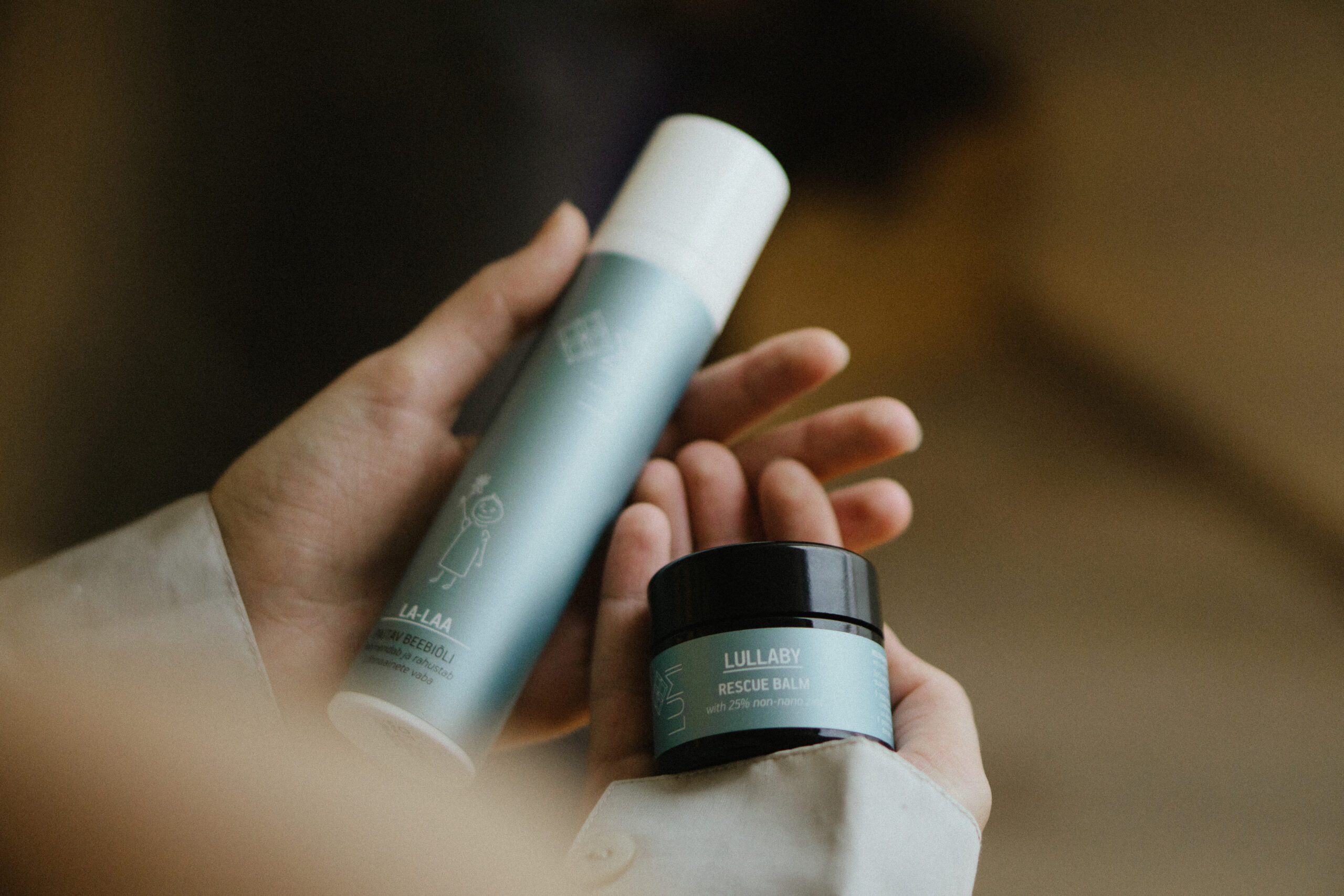
La-Laa Caressing Baby Oil softens, soothes and is fragrance free; composed of food-grade quality ingredients with organic certification.
“In the case of milder eczema, moisturising with vegetable oils is often enough – there is no need for more complex formulations. It is important to monitor your child and assess how severe the eczema is. There is a big difference in the types of intervention necessary for skin that is simply rough or is fully inflamed, for example. From my experiences with my own two children, slight roughness or redness of the skin can often be effectively treated with basic skincare. However, as with any condition, dermatitis treatment requires us to consider and address the needs of the whole body, not just an affected area.”
Is Skincare Alone Enough?
“Skincare is an important part of treating dermatitis, but is essentially only dealing with the consequences of the condition. It’s vital to find out the circumstances that trigger dermatitis symptoms. In general, in summer, dermatitis is mostly alleviated or disappears entirely, thanks to sun and seawater. The disease can be much more active in spring, autumn and winter – particularly around Christmas time, where bad weather combines with children eating lots of sweets and high-sugar fruits, etc.”
“In the case of caring for my own children, I try to ensure that all products used at home – from cleaning products to body washes – must also be pure compositions that are as free of additives as possible. I use as few as possible, and don’t have shelves of products each only catering to very specific niches. For example, I use soda a lot – a very basic yet useful cleaner. We also eat home-grown or organic food as much as possible, and try to avoid store-bought fruit.Additionally, we supplement all of this by taking vitamin D and probiotics, as the gut microbiome affects the entire body’s health.”
“I strongly recommend consuming Omega fatty acids – hemp oil is taken daily in our family. I often see people afraid to give vegetable oils to their kids, as if it is something dangerous, yet never question the medicines they regularly use with them. My children have been consuming hemp oil since they were babies, because I know just how beneficial it can be – helping with digestion, skin conditions, child development, and much more.”
What else should I keep in mind?
“Continual monitoring of your child is key – keeping a diary can be extremely helpful, as atopic dermatitis is a very individualised disease. Avoid external irritants as best you can, and avoid food additives and processed foods. Sometimes, it’s possible that small children are not actually reacting to additives, but are simply adapting to new types of food. For example, some babies cannot eat carrots without skin irritation until at least a year old.”
“Focus on your child, not how others are doing. Be alert to their wants, needs and reactions. If some things are not working, do not push your child’s body to accept them, but rather give it time. If a child’s skin is itchy, don’t scratch it; instead, pat it or gently massage vegetable oil into the affected area – it will have a much less damaging effect on the skin.”
Helen’s Reminders
Probiotics and hemp oil:
“Number one in my dermatitis skincare kit. Both are supported by a wealth of research. It has been shown that the microbiome of allergy sufferers is significantly less diverse than non-sufferers, and since modern humans have already lost a significant amount of their bacterial diversity compared to our ancestors, probiotics can be beneficial for everyone. There is nothing to lose, whilst results can often be astonishingly effective – especially for babies born via caesarean section.”
“Hemp oil provides us with Omega-3, which approximately 85% of people are lacking, and supports many bodily functions. Why cannabis? Because hemp has the perfect ratio of omega acids for humans, and also contains gamma linolenic acid (GLA), which is great for fighting skin problems.”
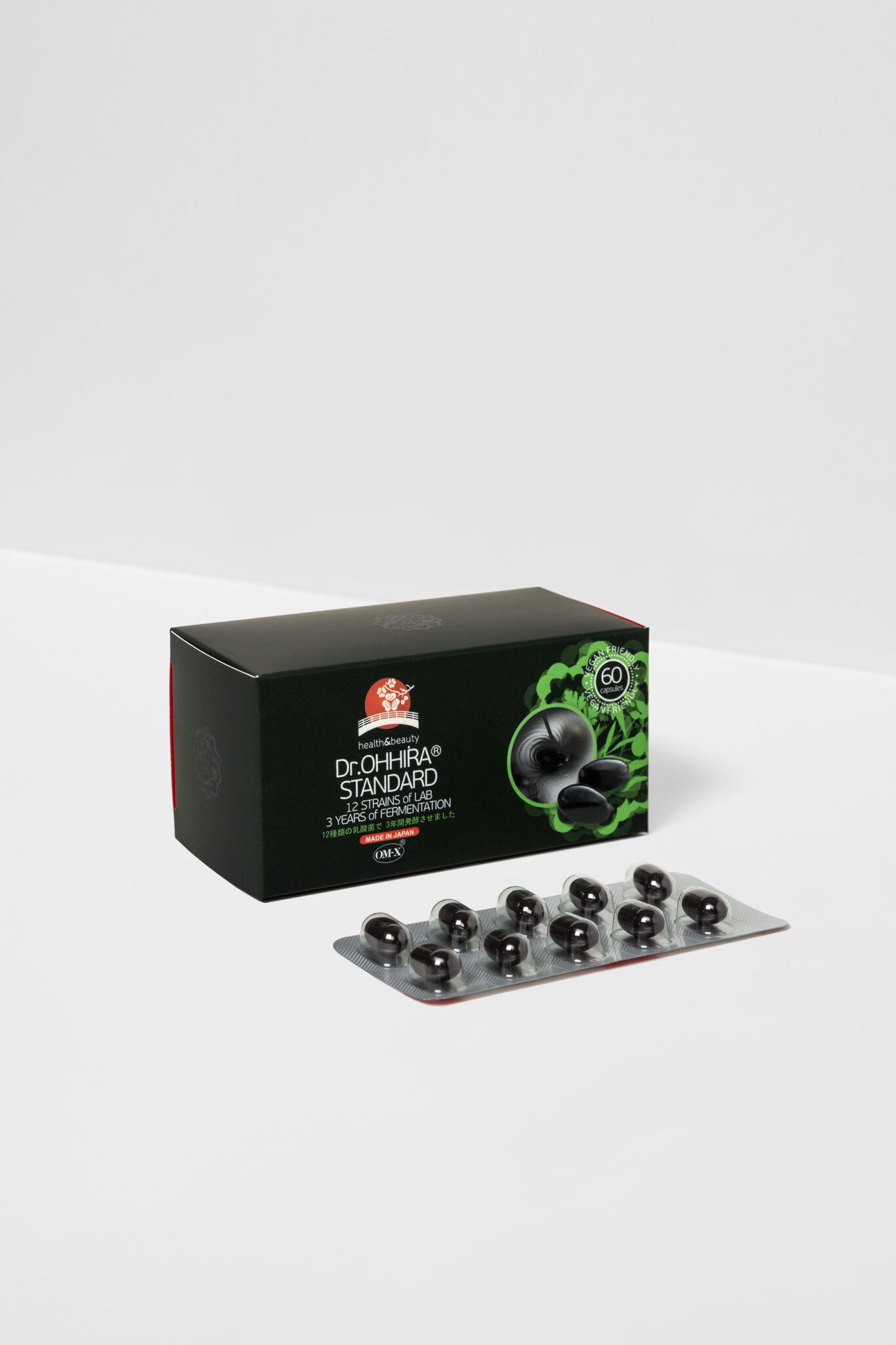
Probiotics can be beneficial for everyone.
Home cleaning:
“For cleaning my house, I only use soda, citric acid and vinegar, and try to avoid taking home anything with excess additives. I do my laundry with an eco-friendly liquid detergent and I always research ingredients before buying products; I use liquid products with simple compositions that are as natural as possible, and always fragrance-free. I do not use powders of any kind, and won’t go near questionable preservatives (such as anything containing methylisothiazolinone). Sometimes you’ll find such products labelled eco-friendly, so it pays to be attentive to ingredients labels. Fragranced products can be recognised by parfum/fragrance on the bottle, or words such as linalool, limonene, etc. This is also how I can tell if skincare products are fragranced. Added chemicals and synthetic fragrances are often the root cause of allergic reactions. Finding the reason for your flare-up is imperative to properly solving the issue.”
Find the reason:
“When you are aware of food allergies or intolerances, allergies to household chemicals, etc., your chances of controlling the problem are much greater. In milder cases, a good cream can relieve atopic dermatitis symptoms, but it is still important to identify the root cause of the issue. Visiting a doctor is always a good idea, but you can also do a lot yourself through observation, experimenting, and using a food diary. Try to think when the problem started – perhaps after introducing new foods, medicines or vaccinations, beginning nursery or school, etc. Something new in the child’s life may have caused this overreaction of their immune system.”
Stress
“Stress can be a big factor in atopic dermatitis manifesting, and stressors on the body can be wide-ranging. According to research, about 30% of skin diseases have a psychological component to them; after all, the skin is an emotional organ, too.”
Nutrition
“Try to provide organic foods for children, and avoid additives (e-numbers), sugar, wheat, and dairy products. The composition of food should be simple and nutritious (things like ready-made meals often are not). Ensure your child’s diet contains plenty of prebiotics or food for the good bacteria in the gut (e.g. green vegetables). We put a special emphasis on garden vegetables and fruit – local berries, for example, are full of essential nutrients.
“Of course, reactions to vegetables and other healthy foods are also possible – there will always be certain people who cannot eat certain things. Food is such a broad topic that it is impossible to do it justice in so few words, but avoiding processed foods that promote inflammation is always going to be of benefit.”
“I have come across cases where a parent has observed and tried many things, but ultimately the root of the problem often comes down to wheat or milk. For example, after eating a pancake, the child’s face may have been very red for several days. It can be difficult to spot signs right away, but you will become better the more you try. If there are several irritants at work the situation can become more complicated, as eliminating one may not cause a visible improvement if other substances are still causing symptoms.”
“Processed foods are generally unsuitable for a healthy lifestyle because they contain lots of additives, have been sitting for a long time losing nutrients, and myriad other reasons. Oriental teachings recommend eating stewed food.Particularly in winter, try to favour warm stewed meals over raw food, so as not to add moisture to the intestines or reduce their temperature. A particularly effective body restorer is a mild homemade bone broth (this can also be great for adults, as it restores the collagen reserves responsible for skin elasticity).
“We often hear it said that because an allergy test has come back clean, someone must be fine to eat absolutely everything. However, in reality, a food intolerance test can give completely different results. You may still find that if you adjust a child’s diet properly, positive results will follow. The diet must be strictly adhered to when it comes to potential intolerances, though. It is not enough to not drink milk at home or only at nursery, etc. Additionally, it is important to monitor whether there are other health concerns that may factor into the issue – diarrhoea or constipation, abdominal pain, long or intense periods of illness.”
Zinc
“Zinc helps greatly as a dietary supplement, as it supports the immune system and cleanses the body. In the case of breastfed babies, it’s usually enough for the mother to take high-quality zinc on her own. Since it is increasingly difficult to get the requisite levels of minerals and vitamins from food these days, babies can also struggle to inherit enough of these substances from their mothers. Children may also benefit from supplemental digestive enzymes.”
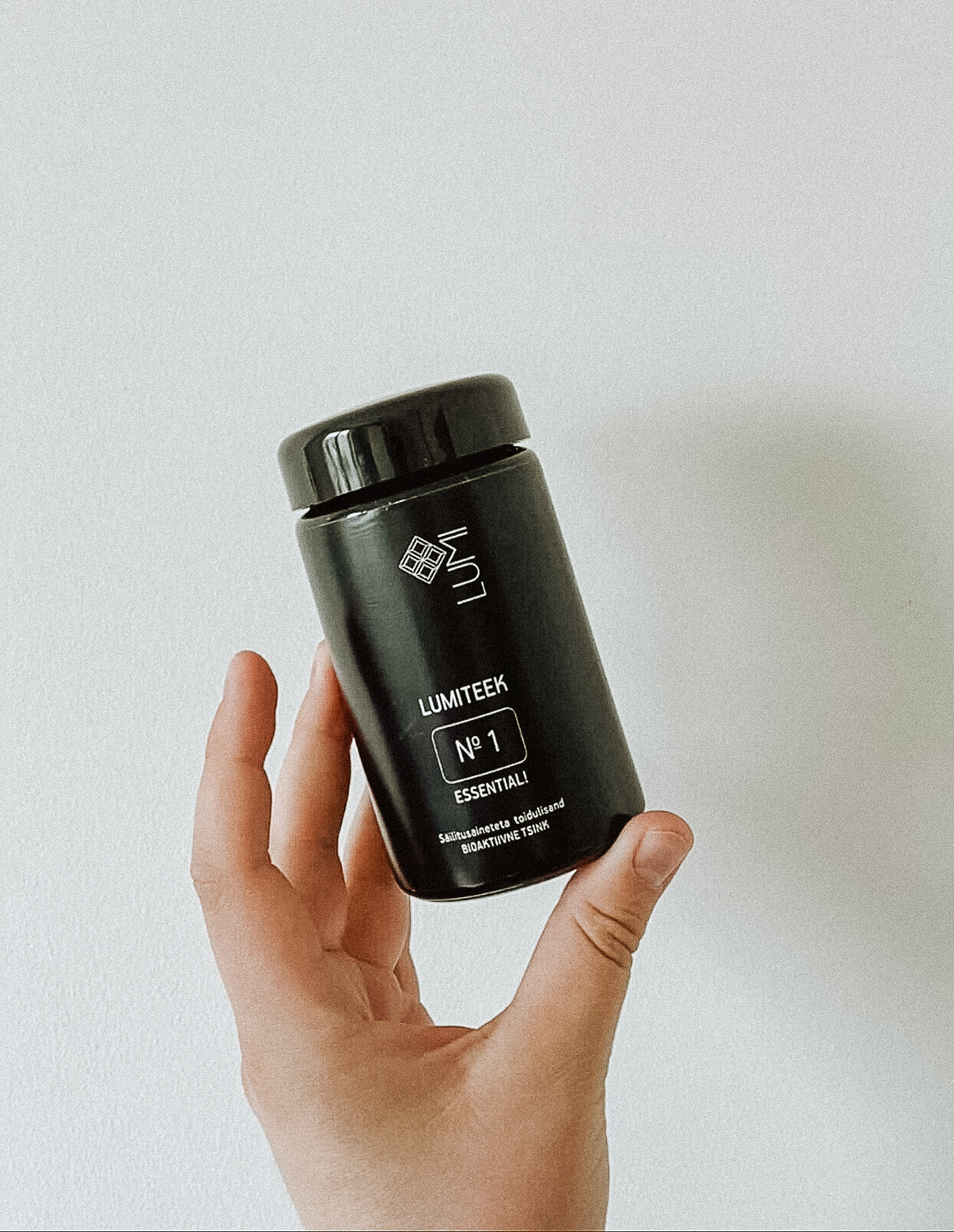
Highly reactive and absorbable, zinc diglycinate is an important mineral for the functioning of the whole body.
Children’s clothes
“It is advised to choose eco-cotton if possible, as well as eco or additive-free nappies. Silk and wool (or blends including them) are also fine, though wool may not be suitable for everyone.”
Bath and pool
“These would be minimum recommendations, with the pool being a ‘no’ in any case. Applying cream is not a solution for repeated irritation. I washed my children just with clean water until quite late on – babies do not need liquid soaps or similar under any circumstances. Both adults and children can use hemp oil and Epsom salt in bath water, for example. With shower products (and the same with creams), make sure you use clean, pure products – petroleum products, preservatives, fragrances and strong surfactants destroy the skin’s microflora, rather than supporting it. As a result, the skin’s protective barrier becomes weaker. The sun and sea water are great saviours – even one day at the beach can be transformative. In winter, when the weather is at its harshest, a sunny beach holiday will only do you good.”
“Finally – if the microbiome is strong, the mind is calm, and the body can handle allergens on its own. The key word is B A L A N C E.”
Skincare recommendations for a child with atopic dermatitis:
- Instead of a bath, try a quick and lukewarm shower. Avoid foaming soaps. If you wish, add LUMI La-Laa Caressing Baby Oil whilst bathing or apply afterward onto damp skin. The oil has a certified organic formula that makes babies’ skin silky soft. It is also suitable for removing baby dandruff or softening crusty areas of skin.
- In the case of atopic dermatitis, it is important to remember that if skin is very red or broken, any water-based product can sting the child and make skin redder. In such cases, we recommend applying anhydrous products, such as LUMI CBD+ healing salve, for the first few days. If redness recedes, you may switch to a LUMI Bio-Klinik cream. Read more about our treatment combo for children’s atopic dermatitis here.
- When cold weather arrives, you may notice irritation on your children’s hands or a harsh dryness. Children often do not dry their hands properly after washing them, which can cause their skin to become fragile and not function properly. LUMI Arctic Hand Cream creates a protective layer over the skin that will help remedy and prevent such situations.
- We recommended giving your child 2 tablespoons of mild hemp seed oil daily. Our favourite is PĒLL mild hemp seed oil. You may be surprised at the gentle taste and how happy your children are to take it!
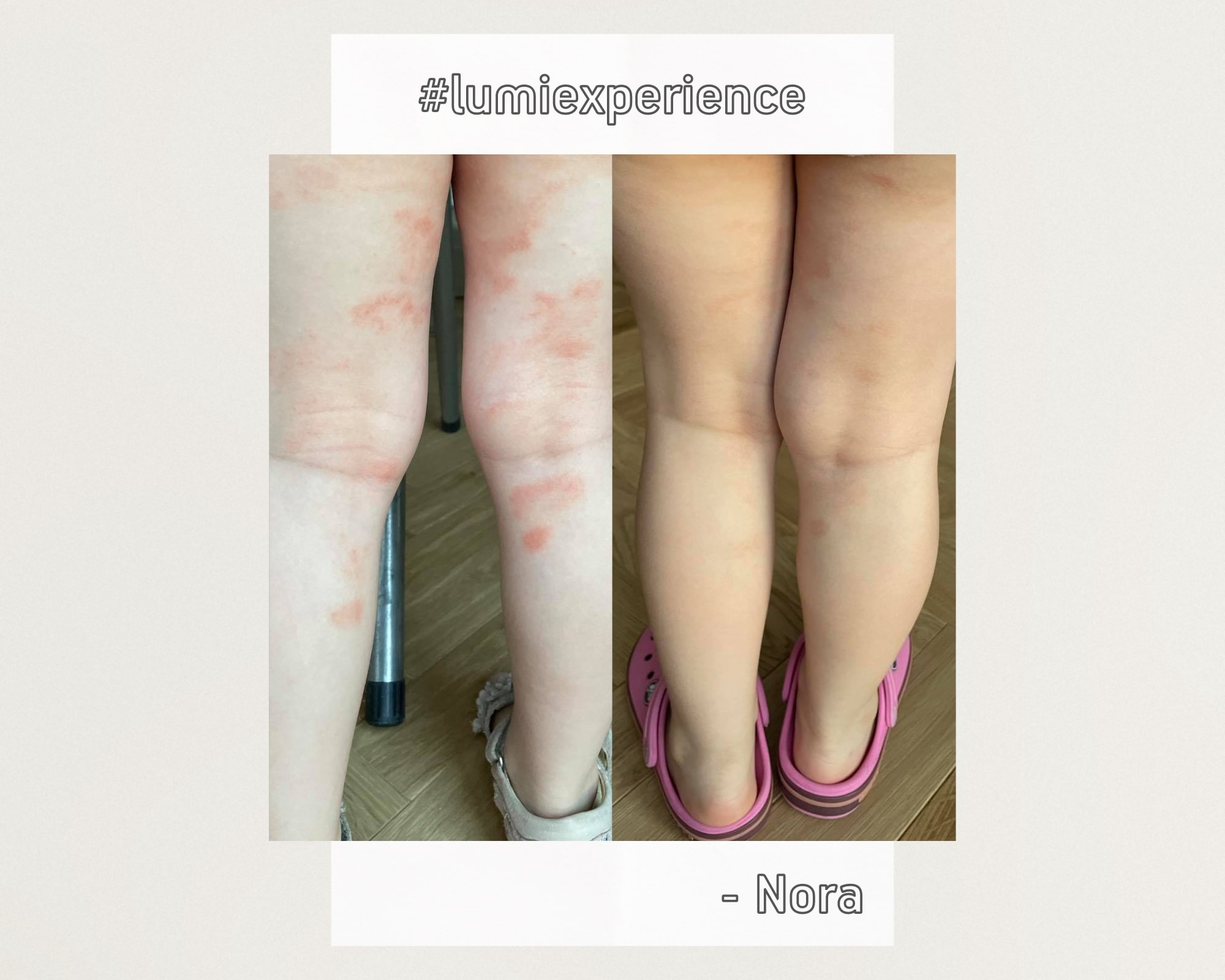
“My 3-year-old daughter developed red, dry patches on her legs. At first, there were a few that disappeared by themselves, but as time went on, more of them started to appear and the situation worsened. We received a diagnosis from the doctor – atopic dermatitis. The doctor immediately recommended to start using hormone ointment, but my mother’s heart did not allow me to apply hormone ointment for my child as the first option.
I decided beforehand to delve deeper into the disease and try to find alternatives. As a first step, we gave up strawberries, sweets and juices from our dining table. On the recommendation of the specialists, we also started using a moisturizing cream to reduce the itchiness and speed up the healing of the skin. The chosen cream was LUMI’s Bio-Klinik Moisture-Lock Body Cream. In the past, I have used various LUMI facial care products on myself, which I really, really liked. In addition to being effective, these products are also 100% natural!
We used the cream twice a day and after two weeks we could already see signs of improvement. After four weeks of use, the red dermatitis spots were gone! Atopic dermatitis is characterized by rapid resolution with proper care, but the result may not be long-lasting. So we have been using the cream once a day until now, and the signs of dermatitis have not returned. I wholeheartedly recommend to everyone to try LUMI’s Bio-Klinik Body Cream before taking medication – Your body will thank you!” – Little Nora’s mother
